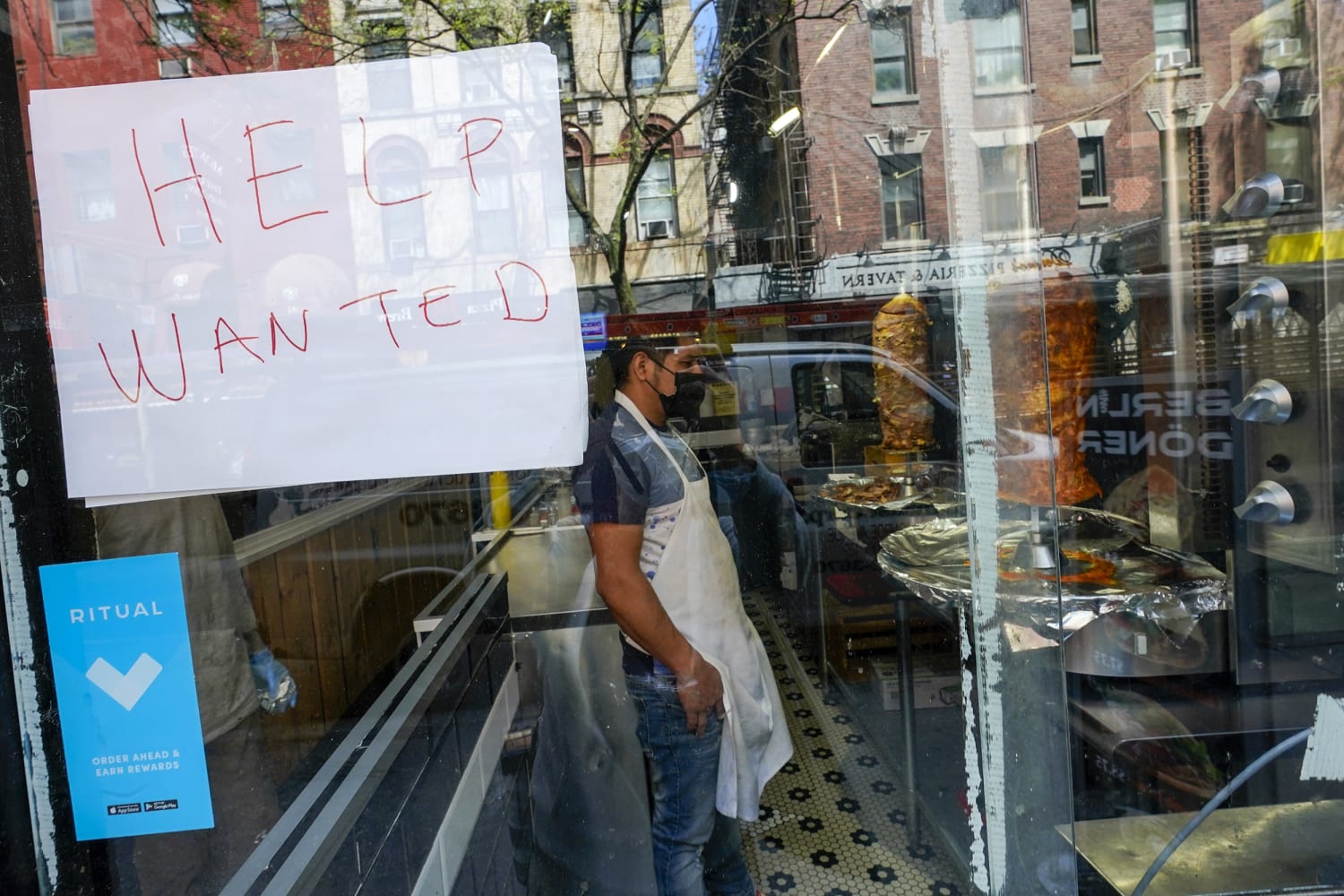
Steering an economy as diverse as that of the United States back onto a path of sustainable growth was bound to mean hitting a few potholes along the way. Analysts say the political blame game over unemployment insurance and price pressures misidentifies the real culprits creating asymmetries in the economic recovery.
In a labor market with a record-high number of job openings, businesses say they want to hire but can’t find workers. Labor Department data released Tuesday found that the number of open jobs hit a record 8.1 million in March on an increase of nearly 600,000 from the previous month. Jobs website Indeed.com found that listings for open positions as of May 7 were 23.4 percent higher than the baseline metric in February 2020, before the pandemic’s effects hit the U.S. economy.
“Labor demand is clearly up. We’ve seen a big increase in job postings on our site,” said Jed Kolko, chief economist at Indeed.com. “There’s lots of demand for workers, and we see that both in the sectors that did fairly well during the pandemic like construction, manufacturing and warehouse jobs — the sectors that really helped support the stay-at-home economy — but we’re also seeing job postings rise in sectors that slowed or shut down and are reopening,” he said.
The National Federation of Independent Businesses, a small-business trade group, reported that a record 44 percent of small businesses — which contribute the majority of jobs in the U.S. labor market — have openings they’re trying to fill. The group noted that April was the third consecutive record high. “The small business labor market is still a huge challenge for many employers who are looking to fill open positions,” said Holly Wade, executive director of the NFIB Research Center.
Numerous business groups and Republican lawmakers have blamed the worker shortage on expanded unemployment benefits, an additional $300 a week that, for the lowest-wage workers in some states, can equal or exceed the amount they could earn from a job. Governors in a growing number of GOP-led states have said they will discontinue those increased benefits in order to combat labor shortages in their states — but economists say that blame is largely misplaced.
“Right now, there are several other factors that are also holding back labor supply,” Kolko said. “Parents, especially mothers, are still struggling with the added burden of child care, with schools and day cares not being fully open in many places. People are still concerned about the risk of catching or spreading the virus at work… Even with the rise in vaccinations, he said, “It’s not complete and it is many regions still lower than it needs to be for people to feel fully comfortable.”
Mark Zandi, chief economist at Moody’s Analytics, said the big increase jobs at places like restaurants and casinos last month undercuts the Republican argument against higher benefits for jobless workers. “If unemployment insurance was that big a deal, we wouldn’t have seen 331,000 jobs in leisure and hospitality,” he said. Expanded hiring at places like hotels and restaurants was offset by losses in other sectors, bringing the total number of new jobs to 266,000, about 25 percent of the 1 million experts had predicted.
In remarks on Monday, President Joe Biden rejected the notion that the supplemental unemployment payments were the primary hurdle to both job growth and employers’ hiring difficulties. He said his administration will make sure that unemployment insurance rules prohibiting people from collecting benefits if they reject a “suitable” job — although he added the Covid-19 related health and safety concerns still must be accommodated. “No one should be allowed to game the system and we’ll insist the law is followed, but let’s not take our eye off the ball,” Biden said.
Another sign of the recovery’s growing pains: Anecdotally, prices paid by consumers are ticking up. Economists say the reasons behind this, too, are complicated: Business owners across a wide swath of sectors face spiraling input costs, with supply chains pinched just as demand for raw materials is booming, and fuel prices climbing on top of mounting wage pressure, especially for lower-wage and lower-skill work.
The NFIB found that business owners are paying more to fill their open positions. “We also saw a bit of inflation on Main Street,” Wade said. A net 31 percent of NFIB survey respondents said they raised compensation, the highest reading in the past year, and another net 20 percent say they will raise compensation in the next three months.
“We could see accelerating wage growth, and some firms have announced that they’re raising their starting or minimum wage, but it’s too soon to say how much of that might be temporary until supply and demand are a bit more in sync, or whether that’s going to be a more enduring shift,” Kolko said.
The big question is if, when — and, crucially, why — companies raise prices. Economists say it is, at best, tricky to tease out the respective roles of rising costs for labor, or for components such as raw materials and fuel, are leading some companies to raise prices. “We do know that it is a mix. Many owners are experiencing both of these challenges at the same time, which is creating a very stressful situation,” Wade said. “The challenge that they face going forward is managing price increases due to these added cost measures they’re having to absorb… It’s multi-faceted, it’s a challenge and it’s likely to continue to be a challenge in the near term,” she said.
Zandi said that singling out higher labor costs, though, is incorrect. “Wage growth is firm, but so is productivity growth, so unit labor costs aren’t rising to a significant degree,” he said. “That suggested there is no wage pressure on prices.”
“The price increases are coming from disruptions in the global supply chain, which is causing shortages in various commodities,” Zandi said, adding that a slightly hotter economy might not be a bad thing.
“Inflation has been almost uncomfortably low. We want some acceleration.”
Source: | This article originally belongs to Nbcnews.com










